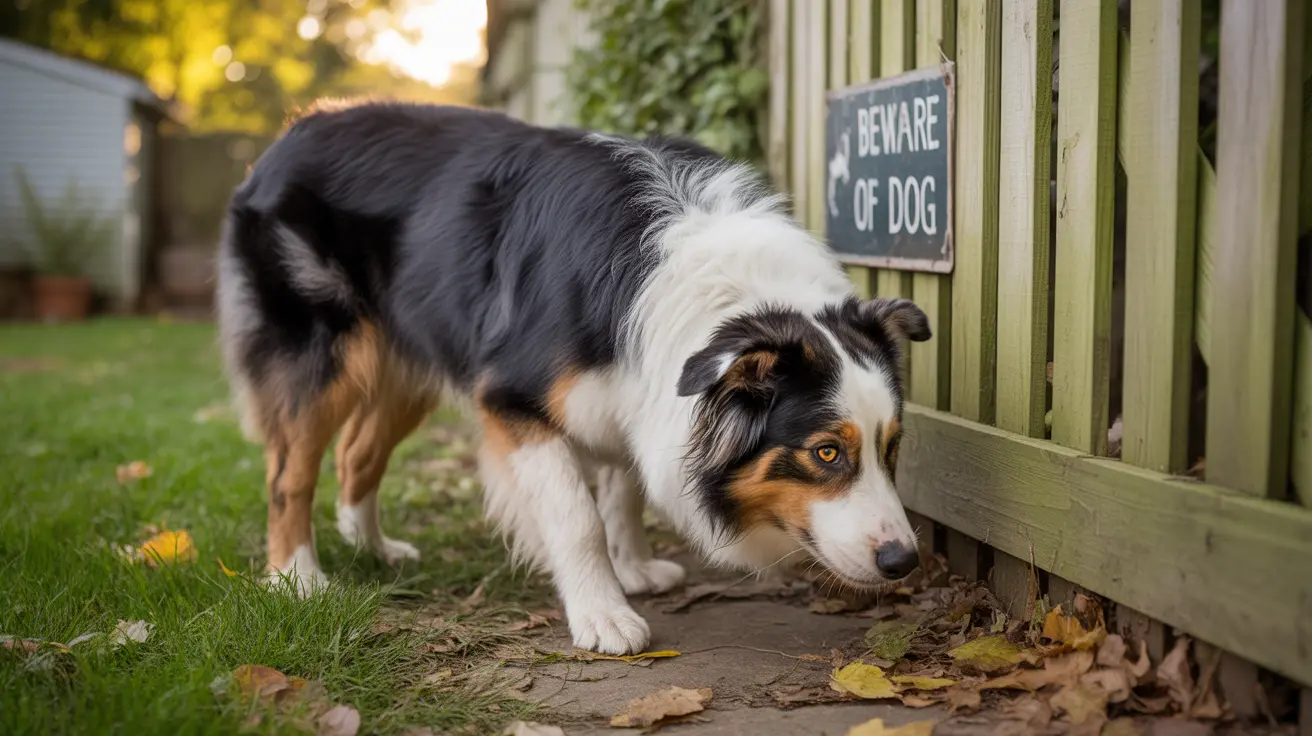Immediate Actions When Your Dog Runs Away
Time is critical when your dog escapes. Follow these essential steps immediately:
Start a Strategic Search
- Remain calm and methodical
- Search your immediate vicinity first
- Take your dog's favorite treats and toys
- Call out in a happy, encouraging voice
- Check familiar walking routes and favorite spots
Activate Your Support Network
- Alert neighbors immediately
- Contact local veterinary clinics
- File a report with nearby animal shelters
- Post on neighborhood social media groups
- Create and distribute "lost dog" flyers
Understanding Why Dogs Escape
Dogs typically run away for specific reasons, and understanding these can help prevent future incidents:
Common Escape Triggers
- Sexual instincts (particularly in unaltered dogs)
- Fear responses to loud noises
- Boredom and lack of stimulation
- Prey drive activation
- Separation anxiety
- Social opportunities with other dogs
Prevention Strategies That Work
Secure Your Property
Creating a safe environment is your first line of defense:
- Install and maintain proper fencing
- Check gates regularly for damage
- Use secure locks on all exits
- Consider double-gate systems
- Install security cameras
Training and Behavioral Solutions
Proper training significantly reduces escape risks:
- Practice recall commands daily
- Use positive reinforcement consistently
- Teach door manners
- Work on impulse control
- Consider professional training classes
Long-term Prevention Methods
Physical Solutions
- Microchipping
- GPS tracking collars
- Secure ID tags
- Quality harnesses and leashes
- Spaying or neutering
Environmental Management
Create an engaging environment that reduces the urge to escape:
- Provide plenty of exercise
- Offer mental stimulation
- Create safe spaces during scary events
- Maintain consistent routines
- Address anxiety triggers
Frequently Asked Questions
What immediate steps should I take when my dog runs away?
Immediately begin searching your local area, alert neighbors, contact local shelters and veterinarians, and post on community social media. Carry treats and your dog's favorite toys while searching, and use a calm, positive voice when calling them.
How can I train my dog to reliably come back when called to prevent running away?
Practice recall training regularly using high-value treats and positive reinforcement. Start in low-distraction environments and gradually increase difficulty. Always reward your dog generously when they come when called.
What are the main reasons dogs run away, and how can I address them?
Dogs commonly run away due to sexual instincts, fear, boredom, or prey drive. Address these by spaying/neutering, providing adequate exercise and mental stimulation, and creating safe spaces during frightening events like thunderstorms.
How effective are fences, collars, and GPS trackers in preventing my dog from escaping?
Physical barriers like secure fencing are highly effective when properly maintained. GPS trackers don't prevent escape but help locate your dog quickly if they do run away. Proper collars and harnesses are essential safety tools when combined with training.
Can spaying or neutering my dog reduce their urge to run away, and how long does it take to see results?
Yes, spaying or neutering can significantly reduce roaming behavior, particularly in males. Results typically begin to show within weeks of the procedure, with full behavioral changes evident within a few months.
Conclusion
While preventing your dog from running away requires consistent effort and attention, the peace of mind is worth the investment. By implementing proper training, securing your environment, and having a solid action plan in case of escape, you can significantly reduce the risk of losing your beloved pet.
Remember that prevention is always better than reaction. Take steps today to secure your dog's environment and strengthen your training routine. If the worst happens and your dog does run away, act quickly and methodically, using the steps outlined in this guide to maximize your chances of a happy reunion.






